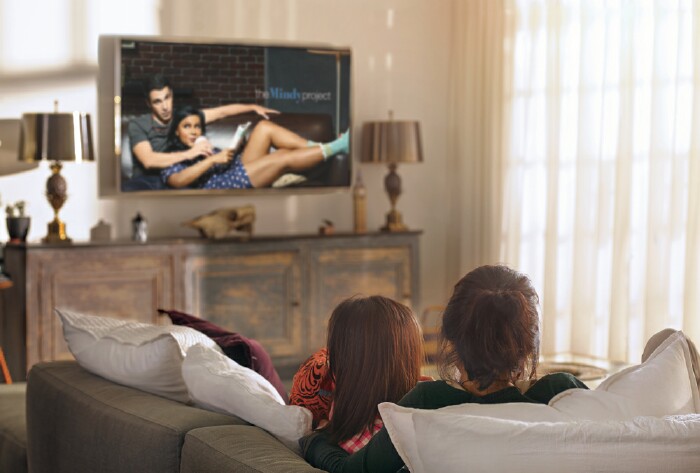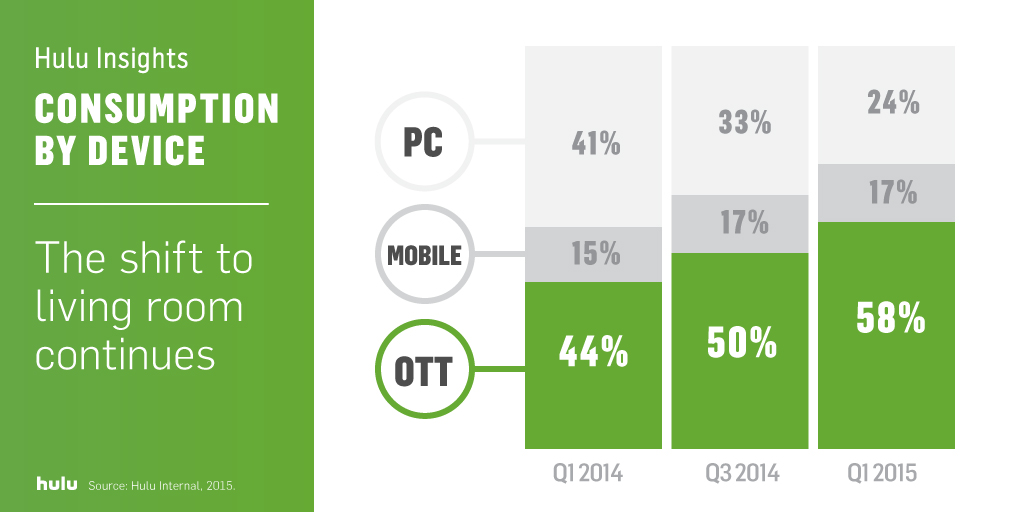Hulu Asks: Mobile First? What About Living Room First?

Over the last ten years there has been an increased focus on mobile devices as a key way to reach consumers, and for good reason. Mobile phones are nearly ubiquitous and smartphone penetration continues to rise, now trailing only TVs and DVD/Blu-ray players in US households (CEA, 17th Annual CE Ownership and Market Potential Study). Video is coming to the forefront across the key mobile channels, particularly social. So conventional wisdom on advertising in digital video might suggest a focus on mobile. However, while some studies have shown that consumers are increasingly watching more content for extended periods of time on their phones (IAB, Mobile Video Consumption -- A Global Perspective), when it comes to long-form, premium content, you have to start with the living room.
For the past five quarters at Hulu we’ve been observing a steady shift of consumption to the living room -- that’s devices like smart TVs, connected devices and gaming consoles. Living room viewing now accounts for more than 58 percent of all of content streams. In early 2014 we saw this trend emerge, when for the first time living room consumption surpassed the PC. And it’s grown quickly: By the 3rd quarter of 2014, living room viewing accounted for half of all streams on Hulu. Freewheel notes similar growth patterns in their latest Monetization Report, where they show that viewing on living room devices grew 380% versus the same quarter last year, more than three times the growth of smartphone consumption in the same time period.

The shift to over-the-top living room viewing has been critical for the uptake of digital streaming viewing behavior by consumers. When viewers are able to watch on the best screen in their home, not tied to PC and mobile devices, viewing becomes a part of their regular routine. And when streaming moves to the TV screen, viewers also watch with friends and family -- just as they do with linear TV. While digital measures have always assumed one impression per stream, living room viewing requires us to take into account co-viewing. In research with comScore around the total Hulu audience, we have found that across all devices, OTT viewing results in 1.4 viewers per stream. For some devices and certain program genres, the co-viewing adjustment factor is as high as 2x. In addition to this co-viewing, over-the-top streaming is highly viewable as it is app based on the TV screen. These positive attributes add to the value that SVOD brings to advertisers in its younger audience, dynamically served ads, and engaged viewing.
Technology advances and the resultant changes in consumer behavior are forever changing the media landscape. Brands have more opportunities to reach their target audiences, ever more efficiently. During this time it’s more important than ever to understand consumer behavior so that you’re not only efficient with your media allocation but also as effective as possible. If you’re looking to reach consumers with high-impact creative, continue to associate your brand with professional, long-form content and make sure to start in the living room.
The opinions and points of view expressed in this commentary are exclusively the views of the author and do not necessarily represent the views of MediaVillage management or associated bloggers.


